I picked up a nightfall 2 from Costco ($130) after being intrigued by it for the pricepoint and to upgrade my old kelty zen which is ready to be retired. I figured this can start as a place for other people to ask questions about it since there isn't much info on the web about it from any actual owners/users. I think I could have gotten it a little cheaper from some other vendors, but Costco has a great return policy so I spent the extra bucks in case I wanted to send it back.
I weighed it out in the original stuff sack when I got it at 5 lbs 4 oz, which I don't consider particularly light for a backpacking tent but it is about the same as my kelty bag for a 2 man set up. The stuff sack it came in was generously sized- probably too generous with an extra 4" of bag length on it past the the poles and tent material, which already seemed pretty substantial. I had a 1.5 liter Sea to Summit stuff sack laying around and separated the poles from the tent and the rainfly and internal nest stuffed pretty tightly into there. It make a space difference compared to the original stuff sack, but I still don't consider it to have a "small" profile. I also found that stuffing it as 2 pieces instead of all connected made it go into the S2S stuff sack much easier.
Next step was the setup in the yard. (forgive the yard please, we're pulling out an old porch and hot tub that might be visible in the background). The aluminum poles are light and have a curve on one end, which is easy enough to figure out how to set up if you just read the directions once. Setup was breeze, with the first attempt going up in under 10 minutes. The most interesting thing about the tent is that it can be set up in a "fast-pitch" mode as a floorless shelter by omitting the nest and just setting up the rainfly and poles in a floorless style. This supposedly drops the weight down to around 3 lbs 9 oz, but I haven't weighed it out yet like this. The rainfly and nest are attached with little toggle bolts on the inside of the fly. I would definitely say if you are planning to run the nest, you should already have it attached to the rainfly because its a little challenging to hook up the toggle bolts when already in the field with the rainfly up. Wouldn't want to attempt it in a downpour, I kept bumping into the ceiling while trying.
Once set up in the fast pitch mode, I can only describe the tent as spacious! plenty of room for 2 people- 2 actual people not the imaginary tiny people that most tent ratings have. The downside of the fastpitch mode is that it doesn't have a sod skirt style like a tipi so there is about a 1" gap from tent bottom to the ground around most of the tent. I tried working on the tension to see if I could get it any lower, but could never eliminate the gap entirely. Once you put in the nest, you lose usable significant space in the vestibule and along the outside edges. Still room for 2 people but now it gets closer to being a traditional 2 -person backpacking tent for space. Slumberjack does offer a footprint for the tent but its dimensions match those of the nest, not the rainfly/outer dimensions so you still don't have as much protected ground space as just running it entirely floorless or with a custom cut groundsheet. The last two pictures show the kind of space you lose when you add the nest
The tent only has one door, with double parallel zippers, but I would probably only use one zipper to access the interior so I can use the other part of the vestibule overhang for storage space. Overall, I think I'm going to kept it and I like it particularly in fast pitch for backpacking, but would definitely be willing to pack the nest for fishing trips with buddies, shorter hike-ins or rafting trips. If you are wanting to give a floorless setup a try, I think purchasing through Costco is a good way to go, both for the low purchase point for that style tent, and the return policy in case you hate it. My next post will be the results of a garden hose test, but feel free to ask questions and I'll do my best to answer them. Also this is my first gear review so feel free tp leave feedback on how to do it better!
Pros:
cheap for a floorless starter
floorless setup is very spacious
simple setup
ability to run in either mode/nest included in purchase price
relatively light in fastpitch (but def. not UL)
nest abandons usable floor space
cons:
included stuff sack is too big
stuffed profile still pretty significant
full setup not too light
poles felt a little flimsy
groundsheet not included
optional ground sheet doesn't make full use of entire floor space available
I weighed it out in the original stuff sack when I got it at 5 lbs 4 oz, which I don't consider particularly light for a backpacking tent but it is about the same as my kelty bag for a 2 man set up. The stuff sack it came in was generously sized- probably too generous with an extra 4" of bag length on it past the the poles and tent material, which already seemed pretty substantial. I had a 1.5 liter Sea to Summit stuff sack laying around and separated the poles from the tent and the rainfly and internal nest stuffed pretty tightly into there. It make a space difference compared to the original stuff sack, but I still don't consider it to have a "small" profile. I also found that stuffing it as 2 pieces instead of all connected made it go into the S2S stuff sack much easier.
Next step was the setup in the yard. (forgive the yard please, we're pulling out an old porch and hot tub that might be visible in the background). The aluminum poles are light and have a curve on one end, which is easy enough to figure out how to set up if you just read the directions once. Setup was breeze, with the first attempt going up in under 10 minutes. The most interesting thing about the tent is that it can be set up in a "fast-pitch" mode as a floorless shelter by omitting the nest and just setting up the rainfly and poles in a floorless style. This supposedly drops the weight down to around 3 lbs 9 oz, but I haven't weighed it out yet like this. The rainfly and nest are attached with little toggle bolts on the inside of the fly. I would definitely say if you are planning to run the nest, you should already have it attached to the rainfly because its a little challenging to hook up the toggle bolts when already in the field with the rainfly up. Wouldn't want to attempt it in a downpour, I kept bumping into the ceiling while trying.
Once set up in the fast pitch mode, I can only describe the tent as spacious! plenty of room for 2 people- 2 actual people not the imaginary tiny people that most tent ratings have. The downside of the fastpitch mode is that it doesn't have a sod skirt style like a tipi so there is about a 1" gap from tent bottom to the ground around most of the tent. I tried working on the tension to see if I could get it any lower, but could never eliminate the gap entirely. Once you put in the nest, you lose usable significant space in the vestibule and along the outside edges. Still room for 2 people but now it gets closer to being a traditional 2 -person backpacking tent for space. Slumberjack does offer a footprint for the tent but its dimensions match those of the nest, not the rainfly/outer dimensions so you still don't have as much protected ground space as just running it entirely floorless or with a custom cut groundsheet. The last two pictures show the kind of space you lose when you add the nest
The tent only has one door, with double parallel zippers, but I would probably only use one zipper to access the interior so I can use the other part of the vestibule overhang for storage space. Overall, I think I'm going to kept it and I like it particularly in fast pitch for backpacking, but would definitely be willing to pack the nest for fishing trips with buddies, shorter hike-ins or rafting trips. If you are wanting to give a floorless setup a try, I think purchasing through Costco is a good way to go, both for the low purchase point for that style tent, and the return policy in case you hate it. My next post will be the results of a garden hose test, but feel free to ask questions and I'll do my best to answer them. Also this is my first gear review so feel free tp leave feedback on how to do it better!
Pros:
cheap for a floorless starter
floorless setup is very spacious
simple setup
ability to run in either mode/nest included in purchase price
relatively light in fastpitch (but def. not UL)
nest abandons usable floor space
cons:
included stuff sack is too big
stuffed profile still pretty significant
full setup not too light
poles felt a little flimsy
groundsheet not included
optional ground sheet doesn't make full use of entire floor space available
Attachments
-
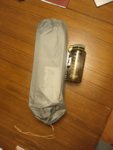 IMG_20200422_203916758.jpg255.8 KB · Views: 53
IMG_20200422_203916758.jpg255.8 KB · Views: 53 -
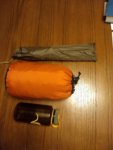 IMG_20200422_214408656_BURST000_COVER_TOP.jpg244.8 KB · Views: 54
IMG_20200422_214408656_BURST000_COVER_TOP.jpg244.8 KB · Views: 54 -
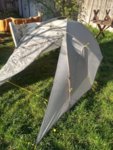 IMG_20200423_180522233_HDR.jpg488.7 KB · Views: 53
IMG_20200423_180522233_HDR.jpg488.7 KB · Views: 53 -
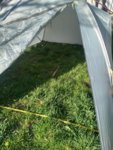 IMG_20200423_180535682_HDR.jpg456.8 KB · Views: 53
IMG_20200423_180535682_HDR.jpg456.8 KB · Views: 53 -
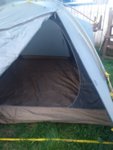 IMG_20200423_195430151.jpg243.2 KB · Views: 57
IMG_20200423_195430151.jpg243.2 KB · Views: 57 -
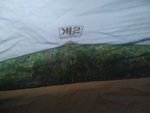 IMG_20200423_195446788.jpg194.1 KB · Views: 51
IMG_20200423_195446788.jpg194.1 KB · Views: 51 -
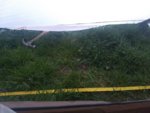 IMG_20200423_195554377.jpg264.3 KB · Views: 52
IMG_20200423_195554377.jpg264.3 KB · Views: 52
